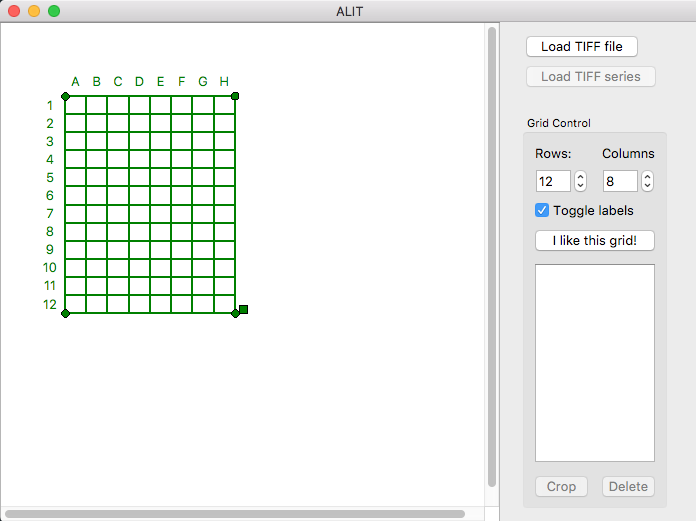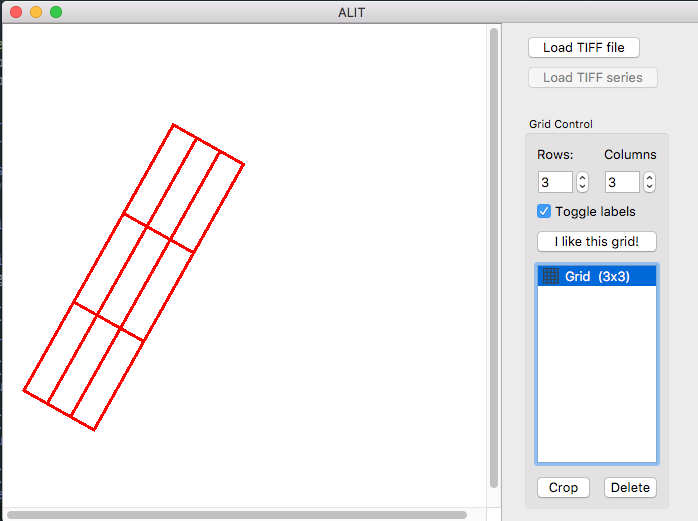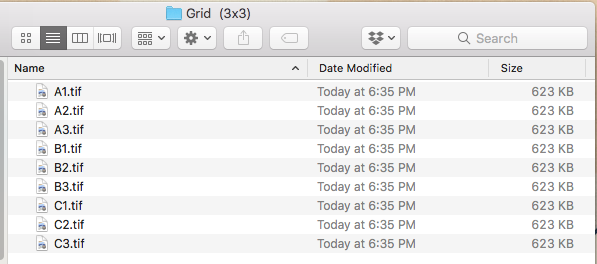This is a utility that I wrote to help me with my work. It consists of a simple graphical interface which allows a user to tile a (very large) image in a timely manner. Professional graphic editors possess similar features, though I was surprised to learn that no commercial software really does what I need, which is the following:
- Load and tile very large TIFF images (~700 Mb) in a few seconds.
- To easily draw, drag, and resize grids to conveniently choose the tiling pattern.
- To be able to save files following the labels of a 96-well plates (commonly used in biology).
The screenshot gives you an idea of what the software accomplishes and how it works. Enjoy!
ALIT is written in Python 3 and requires the PyQt5 library and this
should be everything you need. Currently, ALIT cannot be installed using
pip, but I might distribute it as a Python package in future releases.
- Load the TIFF image you want to tile using the Load TIFF button. TIFF is the only image type currently supported.
- To draw a grid, left-click with the mouse and move the pointer. A second left-click places the grid, right-click to cancel. The result will look similar to the following (where I omit the background image for clarity):
- The grid can be dragged by the edges, rotated using the circles at the corners and resized by clicking on the little square.
- You can also change the tiling patterns and toggle the labels using the Grid control widget.
- Once the grid suits you, click on I like this grid.
- You can now select a grid in the Grid control and start typing to rename it. When you crop the image, the results will be saved in a folder named as the grid.
- If you don't like a grid you placed, delete it using the Delete button.
- When you feel brave enough, select a grid and press Crop. The grid squares are now saved as TIFF files named as the corresponding labels. On my Mac, this is how it looks like for 3x3 grid:
Enjoy!



